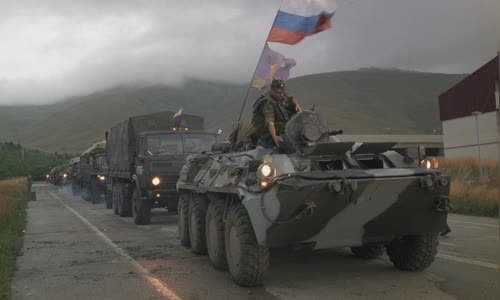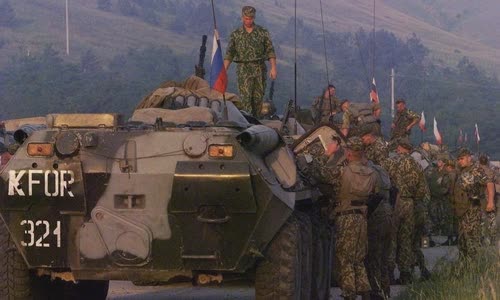Russian troops occupied Pristina airport in Kosovo in early 1999, just before NATO troops deployed and pushed the two sides into a tense confrontation.
Russian President Vladimir Putin revealed in an interview on Rossiya 1 on June 14 that when he was secretary of the Russian Security Council in 1999, he "gave the green light" to General Anatoly Kvashnin, the chief of staff.

Russian troops deployed in Kosovo in 1999 Photo: Sputnik
This Russian campaign sparked one of the most intense confrontations between Russia and the West after the Cold War.
This is a modal window.
Beginning of dialog window.
End of dialog window.
Conflict broke out in Kosovo in 1998 when separatists of the Kosovo Liberation Army clashed with Yugoslav and Serbian security forces under President Slobodan Milosevic.
When the Kosovo War ended on June 11, 1999, Russia planned to deploy an independent peacekeeping force with NATO in Kosovo, but faced with NATO opposition and obstruction.
The Allied Rapid Response Army (ARRC) was deployed by NATO to Skopje in the Republic of Macedonia in early March 1999 to establish a unified command system, which coordinates the operations of the US, British, German,
Early in the morning of June 11, 1999, about 30 armored vehicles with 250 Russian soldiers from the international peacekeeping force in Bosnia moved to Serbia.
At around 10:35 am that morning, General Jackson turned on the TV to watch the news, and was surprised to see CNN report that the Russian armored convoy bearing the words KFOR was rushing toward Kosovo's capital, Pristina.
Before Jackson knew what was going on, the phone rang.
General Clark also called NATO General Secretary Javier Solana to inform the situation, then ordered a British and French paratrooper unit to move by helicopter to retake the airport.
Staff officers fear the helicopter could be shot down by Serbian forces, while entering Kosovo too soon could lead Serbia to withdraw from the deal.

Russian forces deployed outside Pristina airport on June 12, 1999 Photo: Reuters
At 5am on June 12, the British 5th Airborne Brigade began flying to Kosovo to protect the Kacanik Gorge 16 km long, ensuring the advance for the 4th Armored Brigade to Pristina.
A few hours later, NATO forces, including the Norwegian Special Forces (FSK) and British SAS, arrived in Pristina.
The next day, a Russian military attaché approached General Jackson, issued a letter, stating that Russia had occupied Pristina airport and had no intention of leaving.
That night, General Jackson flew to Pristina by helicopter to hold a press conference and met with General Viktor Zavarzin, the representative of Russian forces.
General Clark worried that Russia would deploy troops by air to Pristina airport and ordered NATO helicopters to land on the runway, preventing Russian aircraft transport from landing.
General Leonid Ivashev, a senior Russian officer, later revealed that Russia had planned to deploy thousands of troops by air.
On June 13, General Clark arrived at the AARC headquarters in Skopje, informed that the Russian troops were isolated and could not be reinforced by air, and that Russian support played a key role in achieving
General Jackson thought it would be more appropriate to deploy British armored forces, knowing that this would undoubtedly be opposed by London.
Washington also exerted political pressure on neighboring countries to prevent Moscow from using airspace to transfer reinforcements.
The negotiations are conducted during the confrontation process.
Pristina Airport became a military base on October 15, 1999, before continuing its international air transport function to several European cities.



 Serenity Nicole
Serenity Nicole







